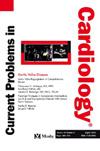Diversity is essential in cardiovascular medicine and subspecialties: A comprehensive report of gender, racial, and ethnic representation among cardiovascular fellows from 2005 to 2022
IF 3.3
3区 医学
Q2 CARDIAC & CARDIOVASCULAR SYSTEMS
引用次数: 0
Abstract
Introduction
The diversity of the healthcare workforce is essential for equitable and effective patient care. This comprehensive report analyzes the representation trends among cardiovascular fellows in the US over an 18-year period, focusing on gender, racial, and ethnic representation.
Methods
Utilizing data from the National Graduate Medical Education Census, this study analyzes trends in representation across gender, race, and ethnicity among cardiovascular medicine fellows. It examines the expansion of cardiology programs and fellow positions in specialties, assessing the evolution of diversity between 2005 and 2022 using J point trend analysis software.
Results
The analysis highlights a stark gender disparity with women comprising only 22 % of fellows, this percentage is even lower in subspecialties. Racial and ethnic disparities are also evident, with Black and Hispanic cardiologists significantly underrepresented, comprising only 12.8 % of cardiac fellows in 2021, even though these groups form 31.9 % of the U.S. population. However, a slow but positive trend toward diversity is noted, with female and Black fellows' representation in cardiology on the rise with AAPC of 5.1 and 3.9, respectively.
Conclusion
Our analysis revealed continued racial and gender disparities in the cardiology specialty. This report calls for concerted efforts from academic institutions, healthcare organizations, and policymakers to implement effective strategies for diversity and inclusion, reflecting the aim of creating a workforce that mirrors the diversity of the population it serves.
多样性在心血管医学和亚专科中至关重要:2005年至2022年心血管研究员性别、种族和民族代表性的综合报告
卫生保健工作人员的多样性对于公平和有效的患者护理至关重要。这份综合报告分析了18年来美国心血管疾病患者的代表性趋势,重点是性别、种族和民族代表性。方法利用全国研究生医学教育普查的数据,本研究分析了心血管医学研究员中性别、种族和民族的代表性趋势。它检查了心脏病学项目和专业职位的扩展,使用J点趋势分析软件评估了2005年至2022年之间多样性的演变。结果分析强调了明显的性别差异,女性仅占研究员的22%,这一比例在亚专业中甚至更低。种族和民族差异也很明显,黑人和西班牙裔心脏病专家的代表性明显不足,2021年仅占心脏病研究员的12.8%,尽管这些群体占美国人口的31.9%。然而,一个缓慢但积极的多样性趋势被注意到,女性和黑人研究员在心脏病学的代表性在上升,AAPC分别为5.1和3.9。结论:我们的分析显示,在心脏病专科,种族和性别差异持续存在。本报告呼吁学术机构、医疗保健组织和政策制定者共同努力,实施有效的多样性和包容性战略,反映出创建反映其所服务人口多样性的劳动力队伍的目标。
本文章由计算机程序翻译,如有差异,请以英文原文为准。
求助全文
约1分钟内获得全文
求助全文
来源期刊

Current Problems in Cardiology
医学-心血管系统
CiteScore
4.80
自引率
2.40%
发文量
392
审稿时长
6 days
期刊介绍:
Under the editorial leadership of noted cardiologist Dr. Hector O. Ventura, Current Problems in Cardiology provides focused, comprehensive coverage of important clinical topics in cardiology. Each monthly issues, addresses a selected clinical problem or condition, including pathophysiology, invasive and noninvasive diagnosis, drug therapy, surgical management, and rehabilitation; or explores the clinical applications of a diagnostic modality or a particular category of drugs. Critical commentary from the distinguished editorial board accompanies each monograph, providing readers with additional insights. An extensive bibliography in each issue saves hours of library research.
 求助内容:
求助内容: 应助结果提醒方式:
应助结果提醒方式:


